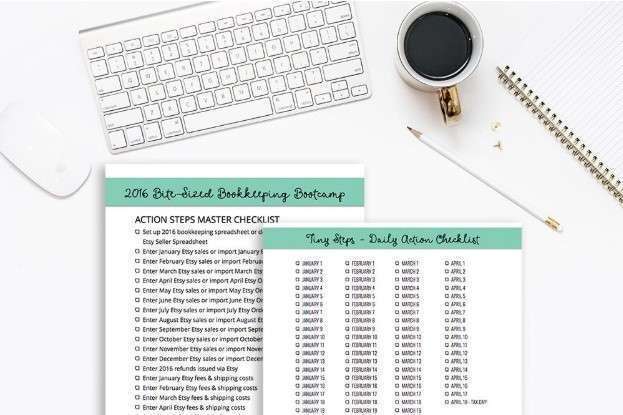If there’s significant evidence that a privately held business might not be viable under the going concern assumption, the auditor must disclose it in the audit report. Even if the business’s financials aren’t audited, an accountant who has concerns about the business’s viability should disclose those concerns to the business owner. It’s given when the auditor has doubts about the company and the assumption that it is a going concern. A qualified opinion can be a concern to investors, lenders and other stakeholders.
- Usually, liquidation value is applied when investors feel a company no longer has value as a going concern, and they want to know how much they can get by selling off the company’s tangible assets and such of its intangible assets as can be sold, such as IP.
- In the first step, evaluate whether or not it is probable that the business will be able to meet all obligations during the next year.
- A going concern, also known as a going concern assumption or going concern principle, is an accounting assumption stating that a business will stay in operation for the foreseeable future.
- The administrator will assume control of the company upon being appointed and any decisions from this point onwards must be done with the interests of outstanding creditors in mind.
- The write-down process includes taking a loss on the income statement, so net income already doing badly will get even worse.
- It’s given when the auditor has doubts about the company and the assumption that it is a going concern.
If there is an issue, the audit firm must qualify its audit report with a statement about the problem. Get step-by-step guidance on how to invest in Tesla stock and learn the ins and outs of this electric vehicle company. Let’s go over some red flags you can look for to see if there could be a bankruptcy in the company’s future. For instance, the value of fixed assets (PP&E) is recorded at their original historical cost and depreciated over their useful life, i.e. the expected number of years in which the fixed asset will continue to contribute positive economic value.
Meet our team
UBS analysts are expecting the AI market to generate a whopping $420 billion in annual revenue in 2027, up significantly from the prior forecast of $300 billion. That translates into a massive compound annual growth rate (CAGR) of 72% until 2027. UBS expects the market for GPUs and AI chips to clock an outstanding annual growth rate of 60% during the forecast period, growing from $16 billion in 2022 to a whopping $165 billion in 2027.
Many or all of the products featured here are from our partners who compensate us. This influences which products we write about and where and how the product appears on a page. This may influence which products we review and write about (and where those products appear on the site), but it in no way affects our recommendations or advice, which are grounded in thousands of hours of research.
Examples of Going Concern Concept
The going concern assumption – i.e. the company will remain in existence indefinitely – comes with broad implications on corporate valuation, as one might reasonably expect. In the absence of the going concern assumption, companies would be required to recognize asset values under the implicit assumption of impending liquidation. Under the going concern principle, the company is assumed to sustain operations, so the value of its assets (and capacity for value-creation) is expected to endure into the future. Although US GAAP is more prescriptive than IFRS Standards, we would also expect under IFRS Standards that management plans are achievable and realistic, timely and sufficient to address the going concern uncertainties. And while our site doesn’t feature every company or financial product available on the market, we’re proud that the guidance we offer, the information we provide and the tools we create are objective, independent, straightforward — and free.
Once this is done, the auditor must issue a „going concern opinion“ which means that the entity has neither the intention (nor the need) to liquidate or curtail in any material way the scale of its operations. Disclosures of material uncertainties that may cast doubt on a company’s ability to continue as a going concern as well as significant judgments involved in close-call scenarios may be more frequent as a result of COVID-19, given the continued economic uncertainty. Management should critically assess the disclosure requirements of IAS 1 and consider drafting required disclosure language early in the financial the difference between grant cover letters grant cover sheets reporting process. When management becomes aware of material uncertainties related to events or conditions that may cast significant doubt on the company’s ability to continue as a going concern, those uncertainties must be disclosed in the financial statements. The terms ‘material uncertainties’ and ‘significant doubt’ are important – this standard phrasing is expected to be used in the basis of preparation note to the financial statements. Accounting standards try to determine what a company should disclose on its financial statements if there are doubts about its ability to continue as a going concern.
The terrific growth is here to stay for a long time
If the accountant believes that an entity may no longer be a going concern, then this brings up the issue of whether its assets are impaired, which may call for the write-down of their carrying amount to their liquidation value. Thus, the value of an entity that is assumed to be a going concern is higher than its breakup value, since a going concern can potentially continue to earn profits. If management does have a plan to sell assets, seek additional financing, start selling a new gizmo, or raise money with new stock issuances, you’ll need to evaluate it. Auditors are required to be conservative, so it is certainly possible, although unlikely, that the plan will work.
The auditor evaluates an entity’s ability to continue as a going concern for a period not less than one year following the date of the financial statements being audited (a longer period may be considered if the auditor believes such extended period to be relevant). If so, the auditor must draw attention to the uncertainty regarding the entity’s ability to continue as a going concern, in their auditor’s report. Separate standards and guidance have been issued by the Auditing Practices Board to address the work of auditors in relation to going concern. As mentioned earlier, it is not the auditor’s responsibility to determine whether, or not, an entity can prepare its financial statements using the going concern basis of accounting; this is the responsibility of management. To meet these disclosure requirements, in our view, similar information to that in respect of material uncertainties may be relevant to the users’ understanding of the company’s financial statements, as appropriate. Similarly, US GAAP financial statements are prepared on a going concern basis unless liquidation is imminent.
What does it mean when a company is bought out of administration?
However, liquidating a company means laying off all of its employees, and if the company is viable, this can have negative ramifications not only for the laid-off workers but also for the investor who made the decision to liquidate a healthy company. Liquidating a going concern can give an investor a bad reputation among potential future takeover targets. Although US GAAP is more prescriptive than IFRS Standards, we do not expect significant differences in the types of events or conditions management would consider when assessing going concern under both GAAPs. A group of investors in Silicon Valley Bank is suing KPMG, the lender’s audit firm, because it did not raise doubts about a going concern in a filing a few weeks before the bank’s sudden and spectacular collapse.
Should Nvidia’s steep valuation be a cause for concern for investors looking to buy this AI stock now?
If the auditor or management deems it unlikely that the business will be able to meet its obligations over the next year, the next step is evaluating the management’s plan. In this step, the auditor must determine whether it is likely that the plan will be implemented on time and whether the plan is sufficient to save the company. Usually, liquidation value is applied when investors feel a company no longer has value as a going concern, and they want to know how much they can get by selling off the company’s tangible assets and such of its intangible assets as can be sold, such as IP. A company or investor that is acquiring a company may compare that company’s going-concern value to its liquidation value in order to decide whether it’s financially worthwhile to continue operating the company, or whether it is more profitable to liquidate it. The going-concern value of a company is typically much higher than its liquidation value because it includes intangible assets and customer loyalty as well as any potential for future returns. The liquidation value of a company will even be lower than the value of the company’s tangible assets, because the company may have to sell off its tangible assets at a discount—often, a deep discount—in order to liquidate them before ceasing operations.
Red Flags Indicating a Business Is Not a Going Concern
More specifically, companies are obligated to disclose the risks and potential events that could impede their ability to operate and cause them to undergo liquidation (i.e. be forced out of business). Under GAAP standards, companies are required to disclose material information that enables their viewers – in particular, its shareholders, lenders, etc. – to understand the true financial health of the company. The reason the going concern assumption bears such importance in financial reporting is that it validates the use of historical cost accounting. The going concern assessment is inherently complex and judgmental and will be under heightened scrutiny for many companies this year due to COVID-19. Management should carefully consider the requirements of IFRS Standards and reevaluate their historical approach to the going concern analysis; it may no longer be sufficient given the current economic environment.


